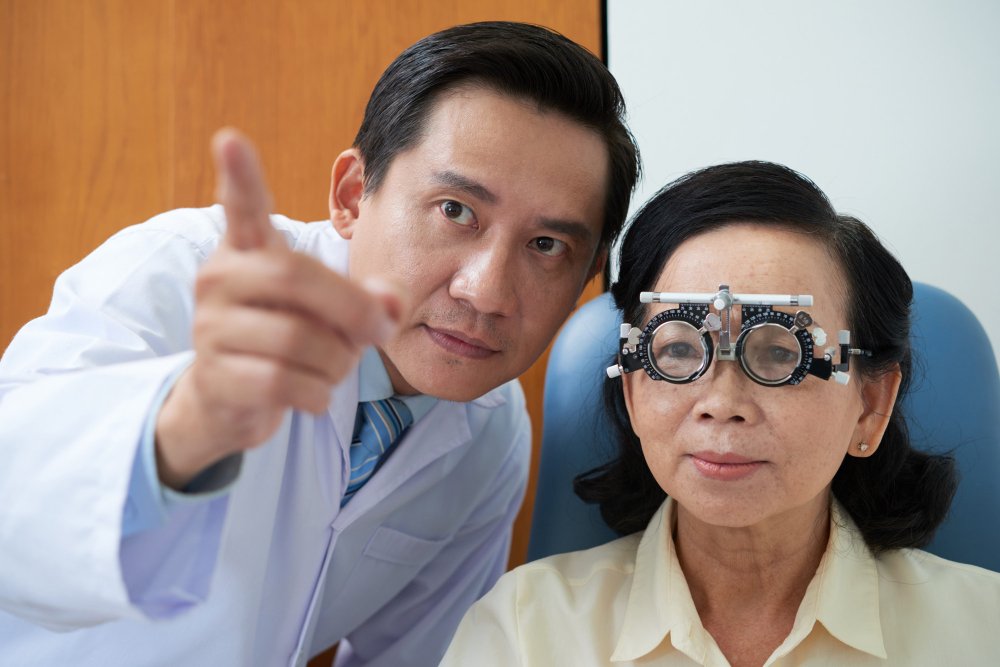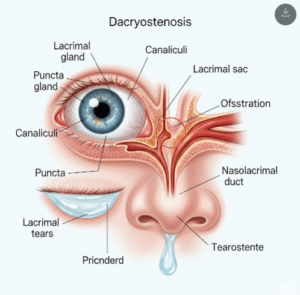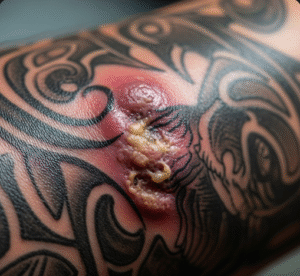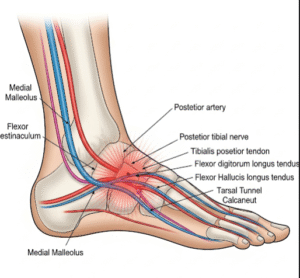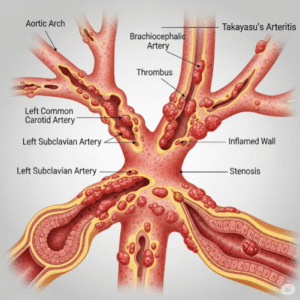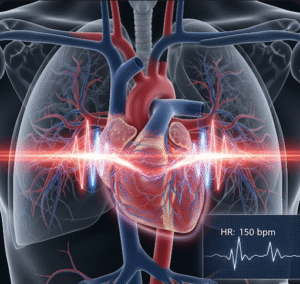Overview
Wet Macular Degeneration is a chronic eye disease that causes blurred central vision or a blind spot in the center of your visual field. It is one of the two forms of age-related macular degeneration (AMD) and progresses more rapidly than the dry form. Wet AMD is caused by abnormal blood vessel growth under the retina, which can leak fluid or blood, damaging the macula—the part of the retina responsible for sharp, central vision.
What is Wet Macular Degeneration?
Wet Macular Degeneration (also called neovascular AMD) occurs when new, fragile blood vessels form underneath the macula. These vessels often leak blood or fluid, causing scarring and rapid damage to the macula. Unlike dry AMD, which progresses slowly, wet AMD can lead to sudden and severe vision loss if not treated promptly. It primarily affects people over the age of 50 and can affect one or both eyes.
Symptoms
The symptoms of wet macular degeneration can develop suddenly and worsen rapidly. They include:
- Blurred or distorted central vision
- Straight lines appearing wavy
- A dark or empty area in the center of vision
- Decreased ability to see colors vividly
- Difficulty reading, driving, or recognizing faces
- Sudden worsening of vision in one eye
Causes
Wet macular degeneration is caused by abnormal blood vessel growth under the macula, often triggered by a breakdown in the Bruch’s membrane and the retinal pigment epithelium (RPE). These vessels are prone to leaking fluid or blood, disrupting retinal function.
The underlying causes include:
- Age-related degeneration of retinal tissue
- Overproduction of vascular endothelial growth factor (VEGF), which stimulates abnormal vessel growth
- Progression from dry AMD in some patients
Risk Factors
Several risk factors increase the likelihood of developing wet macular degeneration:
- Age over 60
- Family history of AMD
- Smoking – doubles the risk
- High blood pressure and cardiovascular disease
- Obesity
- High-fat diet and poor nutrition
- Prolonged sun exposure
- Light eye color (linked with increased sensitivity to light)
Complications
If untreated, wet AMD can lead to:
- Permanent central vision loss
- Formation of a disciform scar (a dense, fibrotic scar under the retina)
- Reduced ability to perform daily activities like reading or driving
- Social isolation or depression due to vision impairment
- Legal blindness, even if peripheral vision remains
Prevention
While wet AMD cannot always be prevented, the following measures can help lower risk or slow progression:
- Regular eye exams, especially if you have risk factors or symptoms
- Stop smoking and avoid secondhand smoke
- Maintain a healthy diet rich in leafy greens, fish, and antioxidants
- Control blood pressure and cholesterol
- Protect eyes from UV exposure with sunglasses
- Take AREDS2 vitamin supplements, as advised by an eye specialist
- Monitor vision at home using an Amsler grid for early detection
Treatment Options in Korea
South Korea offers world-class ophthalmology services for managing wet macular degeneration. Treatment focuses on slowing disease progression and preserving vision. Options include:
- Anti-VEGF injections (e.g., ranibizumab, aflibercept, bevacizumab) – administered directly into the eye to block abnormal vessel growth
- Photodynamic therapy (PDT) – uses light-activated drugs to destroy abnormal vessels
- Thermal laser photocoagulation – used less commonly today, suitable for specific cases
- OCT (Optical Coherence Tomography) imaging – available at most major eye centers for diagnosis and follow-up
- Multidisciplinary care including vision rehabilitation and low vision aids
- Expert care at leading hospitals like Samsung Medical Center, Seoul National University Hospital, and Kim’s Eye Hospital
Korea’s cutting-edge treatments, timely diagnostics, and follow-up care provide excellent outcomes for patients with wet macular degeneration.

